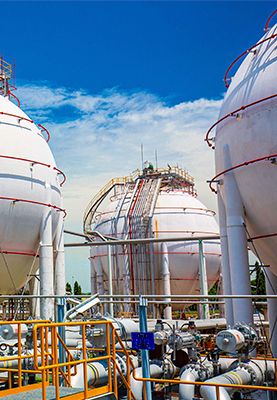- Home ...
- Products
- Brands
- AdapT
- Applications
- Refinery gas treatment
Refinery gas treatment
Eastman AdapT for refineries
Refineries are designed to process crude oil streams into a wide variety of valuable products including gasoline, diesel, kerosene, liquefied petroleum gas (LPG), waxes and more. Most crude oil streams are sour, containing a percentage of organic sulfur species that are not tolerable in the product streams. The most effective process for removal and disposal of the sulfur components is conversion to hydrogen sulfide (H2S) and subsequently elemental sulfur via the Claus process.
MDEA-based technology
Eastman AdapT solvents have a strong track record for refinery use on every continent. MDEA-based technology has become the preferred option for refinery gas treatment because of the high-loading capability, minimal corrosion tendency and high thermal and chemical stability.
Processes:
Products:
Requirements:
Processes like hydrotreating convert sulfur into H2S while units like catalytic crackers produce H2S-containing streams. Other gas streams, such as the gas from catalytic cracking, may also contain carbon dioxide (CO2). Refineries commonly use a distributed amine system with dedicated absorbers for sour gas and liquid hydrocarbon streams along with a shared regeneration section. The absorber design and amine solvent selection are typically geared toward total sulfur removal and partial CO2 removal.


Challenges
Refinery systems often face corrosion from contaminants like hydrogen cyanide in refinery gas.
Eastman’s answer
Eastman’s technical services team assists by identifying contaminants, conducting root-cause analysis and recommending remediation solutions.
Have a question? Need a sample?
Fill out our contact form, and one of our experts will get in touch with you!




